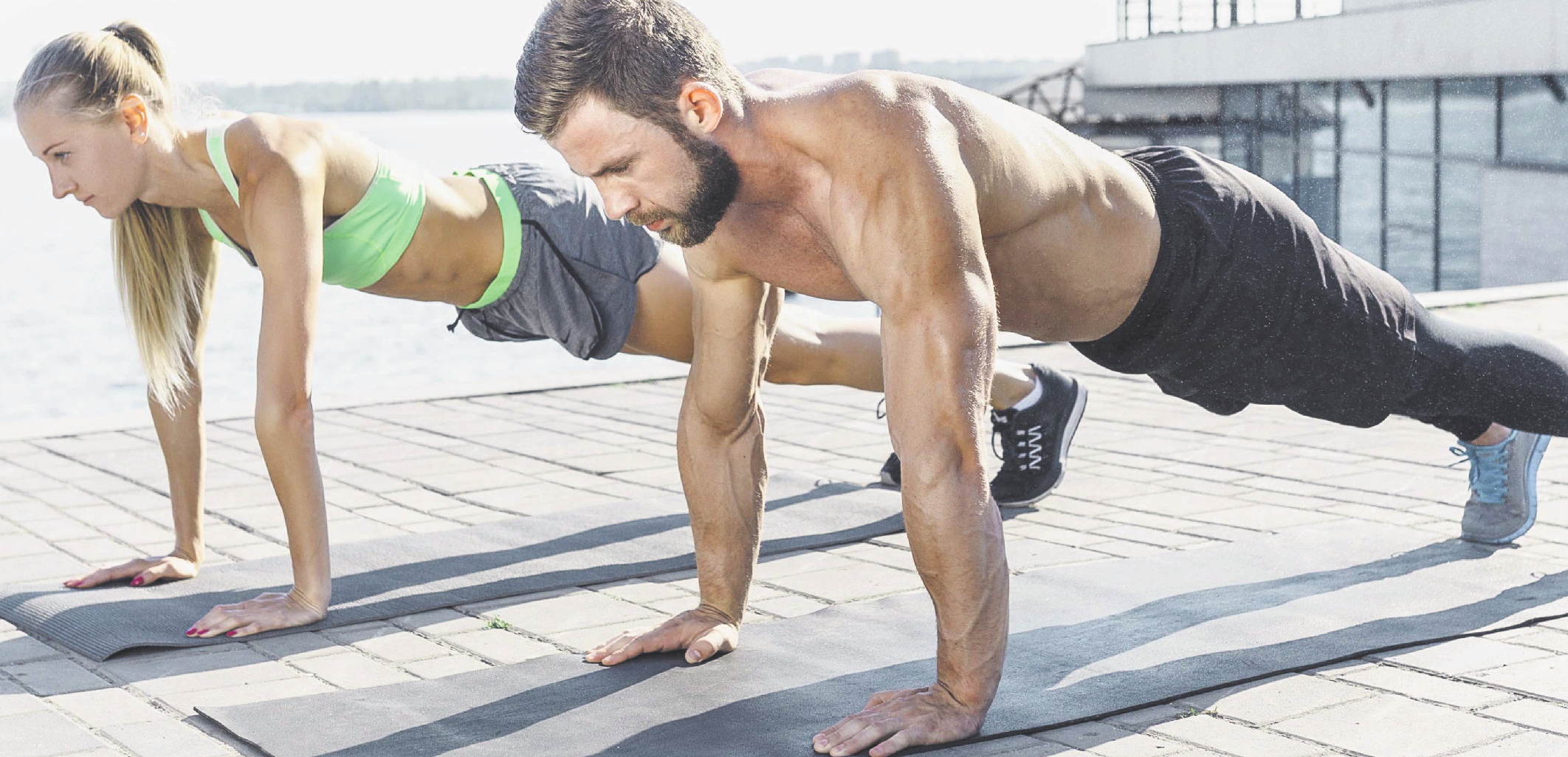 Photo: Getty Images
Stability training with the straight arm prone plank
Photo: Getty Images
Stability training with the straight arm prone plank

1. Activates stabilising muscles that can otherwise remain relatively dormant, thus improving total body strength and increasing caloric expenditure.

2. Helps to prevent injury by strengthening joint connective tissue (stabilising muscles, ligaments and tendons)
3. Improves co-ordination by enabling inter- and intramuscular synergy.
4. A functional “sports” and “everyday life” exercise because a stronger core musculature allows the body to maintain balance under dynamic conditions, helps to improve posture and improves movement efficiency.
5. Boosts mental focus and concentration.
6. Can promote rehabilitation and recovery.
7. This isometric (static contraction) exercise tones arms, shoulders, chest and abdominals and, to a lesser extent, the butt and legs.
8. Enhanced flexibility: the plank position stretches posterior muscle groups such as the hamstrings, shoulders and arches of the feet, contributing to increased flexibility.
9. Increased metabolism: holding the plank position requires energy, which can help boost metabolism and support weight management.

How to?
The straight arm prone plank involves lying on your stomach with your arms bent at your sides, hands directly under your shoulders, and palms flat on the floor.
Press your hands into the floor to lift your torso and straighten your arms. Maintain a straight line from head to heel.
N.B. This stability exercise is accessible, versatile and scalable.
How much?
Start by completing three sets of 10-30 seconds, four times a week. You can progress or regress this exercise as required.
To progress, increase the sets, time durations and/or the weekly frequencies.
To regress, you can begin by keeping your knees on the ground during the exercise.











